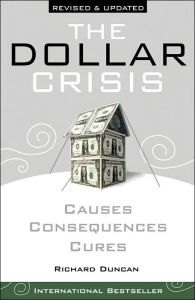Join getAbstract to access the summary!

Join getAbstract to access the summary!
Richard Duncan
The Dollar Crisis
Causes, Consequences, Cures
Wiley, 2005
What's inside?
A prescient and provocative forecast of a massive economic correction in the wake of U.S. credit excesses.
Recommendation
Subsequent events have proven this book to be somewhat prophetic. Richard Duncan offers a very good, although somewhat dry, exposition of the international financial structures that emerged in the wake of the failure of the Bretton Woods system. The author is reasonably evenhanded in his assessment of these structures, noting that they made extremely rapid development possible, but at the great risk of economic crisis. In the wake of the subprime mortgage setbacks of 2007 and 2008, few well-informed people would argue with the author’s indictment of excessive credit expansion. Still, many might argue with his conclusions, especially with his support of a global central bank and a global minimum wage. For those seeking a clear, informed exposition of the systemic vulnerabilities that culminated in the global credit crisis of 2008, getAbstract suggests this book as an excellent starting point.
Summary
About the Author
Robert Duncan has worked as a financial analyst in Asia for more than 16 years. In 1993, he was one of the first to warn of the impending collapse of the Thai economy.
















Comment on this summary